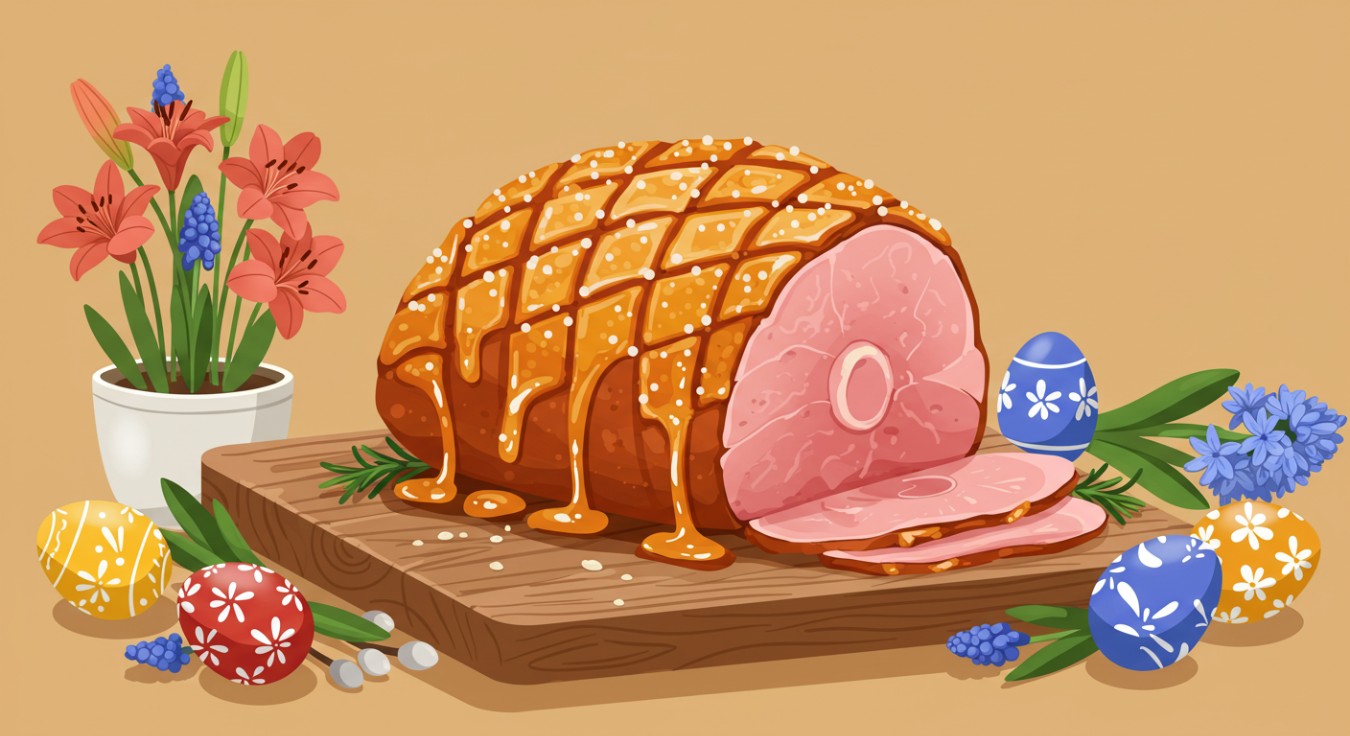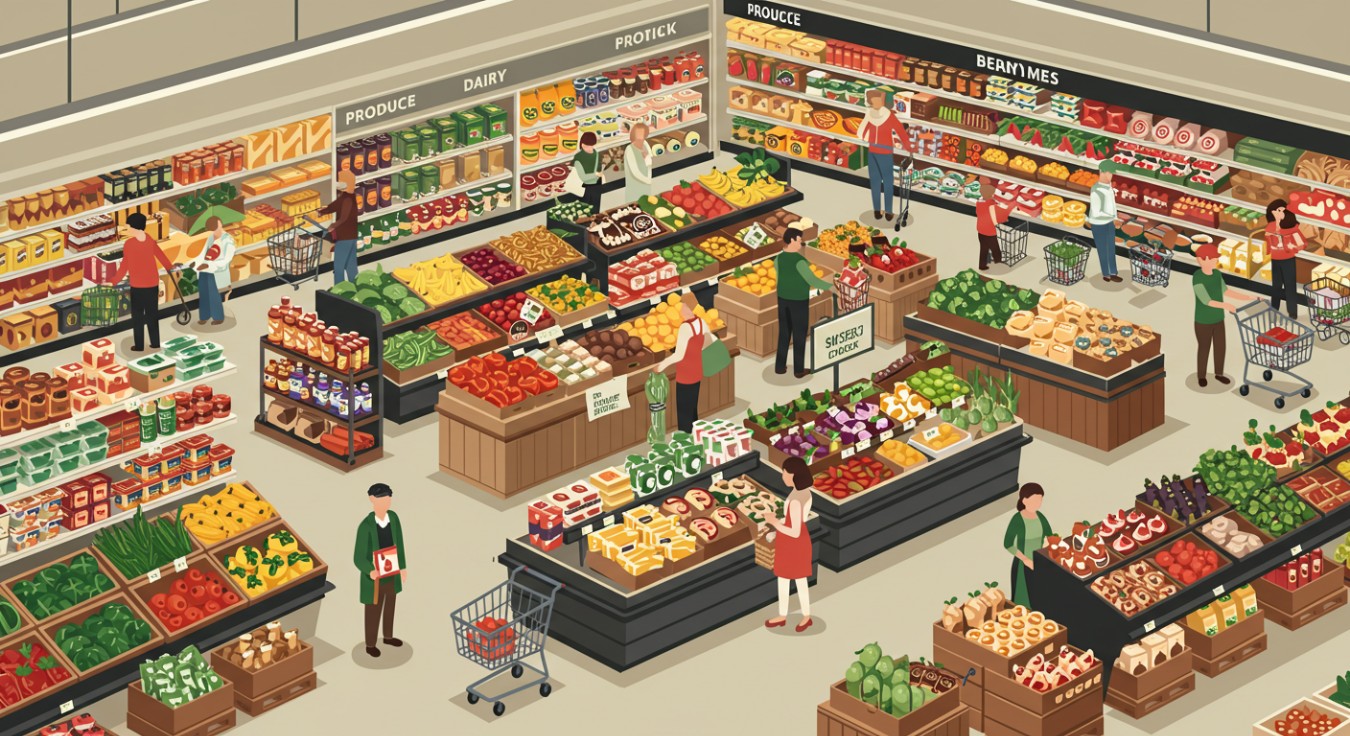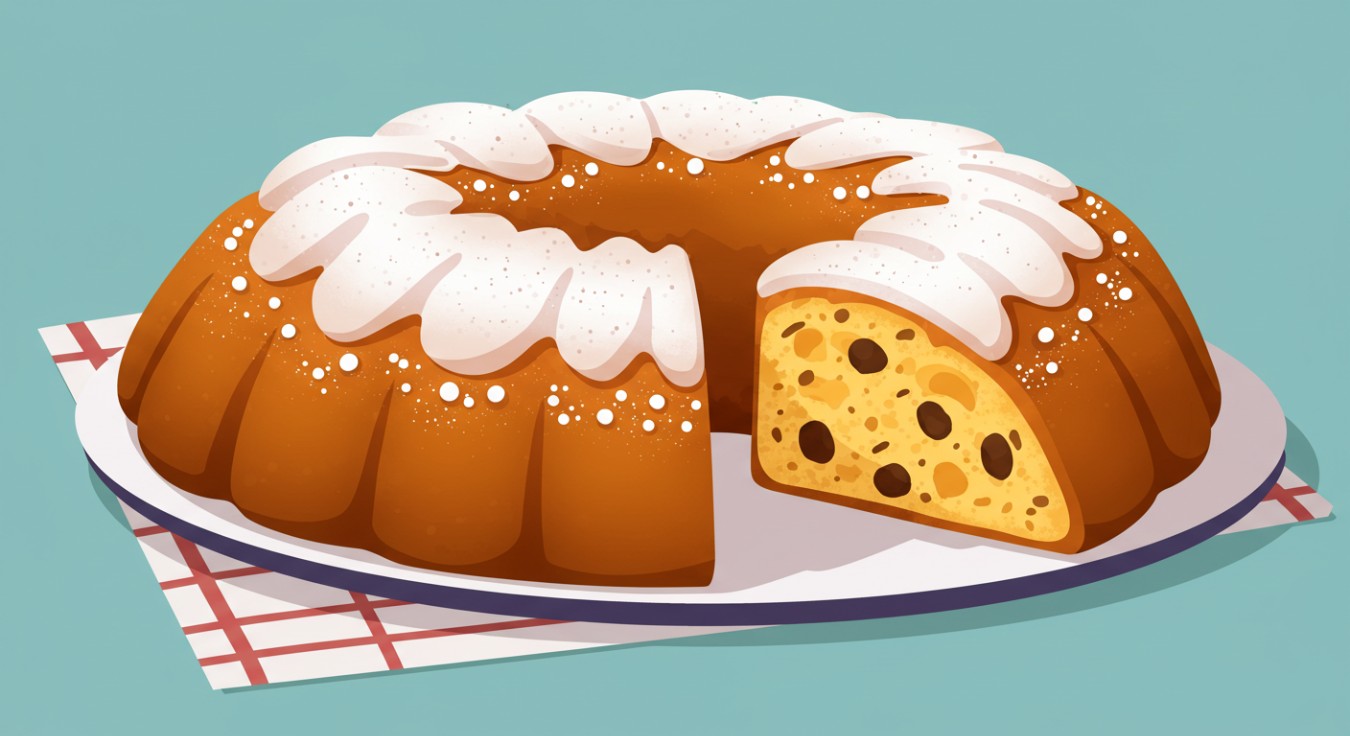Easter Ham: How to Prepare It Properly?
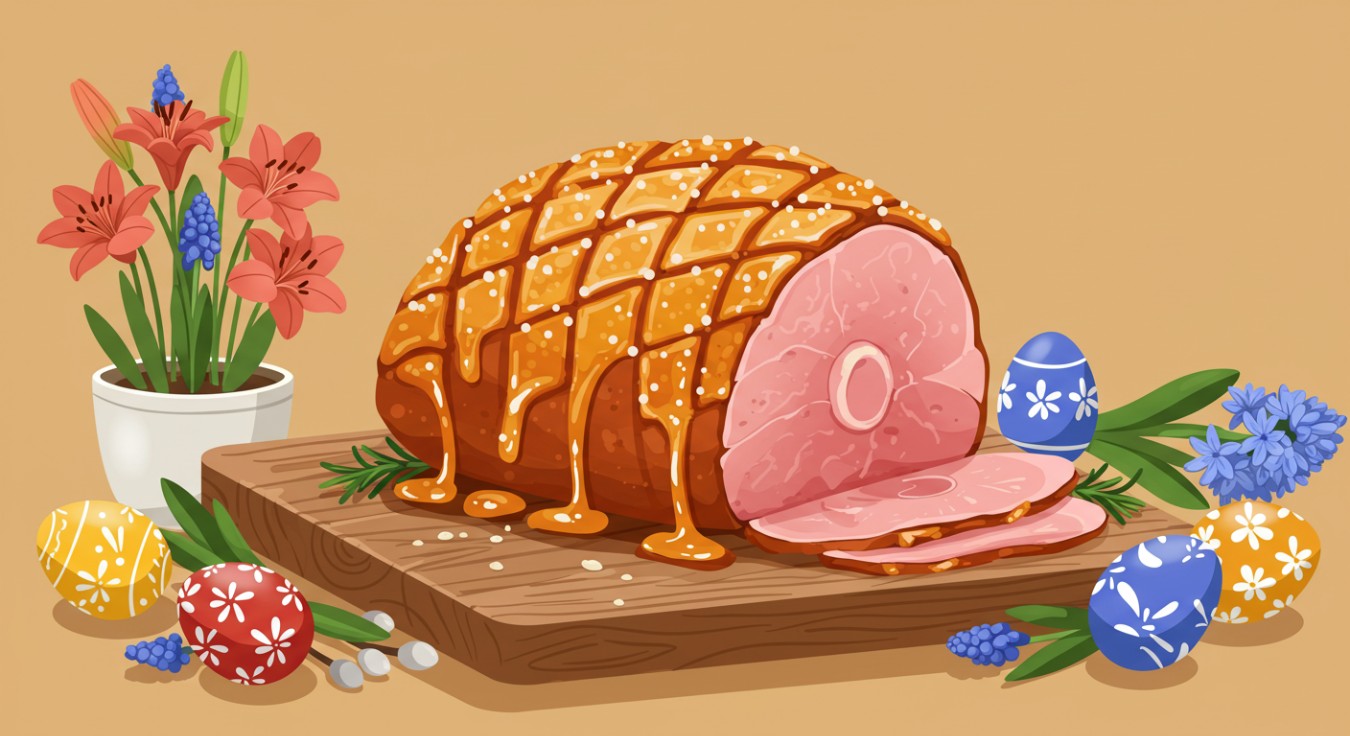
Easter in Slovenia is a time when the air is filled with the aroma of freshly baked bread, the ringing of church bells, and the smoky notes of ham, which has held a central place on the Easter table for centuries.
A bit of history of the dish
Historically, after winter slaughters, when pigs were butchered and meat was preserved, mostly smoked products such as whole ham remained by the beginning of Lent. This explains why it became the centrepiece of the Easter table.
The tradition of baking meat in dough dates back to the Middle Ages when various types of meat were prepared by wrapping them in bread dough. This method helped retain the meat’s juiciness while giving the bread a rich flavour. Over time, this preparation method became especially popular on the Slovenian coast, where šunka in dough became a symbol of Easter.
Ham in the Easter basket: symbolic meaning
Thus, Easter ham in dough is served as part of the traditional Easter breakfast alongside other dishes, each with its own symbolic meaning: pirhi – dyed eggs symbolising Christ’s blood and tears, horseradish – representing the nails used in the Crucifixion, potiča – the traditional nut roll, symbolising the crown of thorns. The šunka v testu itself represents Christ’s body as the central element of the festive table, while the dough encasing the ham is interpreted as a symbol of protection and care, highlighting the idea of preserving and safeguarding life.
Traditional dish
This is not just a dish but a culinary story of the country, where juicy ham baked in golden dough becomes a symbol of homely comfort and centuries – old traditions. Let's look at the traditional easter ham preparation, so you can bring a piece of Balkan warmth to your loved ones.
Ingredients:
- 1.5–2 kg smoked ham
- 500 g wheat flour
- 7 g dry or 20 g fresh yeast
- 300 ml warm milk
- 1 teaspoon sugar
- 1 teaspoon salt
- 50 g butter
- 1 egg
How to cook easter ham:
- Rinse the smoked boneless ham and place it in a large pot. Cover with cold water so that it fully submerges the meat. Slowly bring to a gentle boil and simmer for about 60 minutes. After cooking, let the ham cool in the broth, then remove it.
- In a small bowl, dissolve the yeast and sugar in warm water. Wait. Mix the flour and salt. Add the yeast mixture, warm milk, and melted butter. Knead a soft, elastic dough. Cover the bowl with a clean towel and leave the dough to rise in a warm place for 1–2 hours, until it doubles in size.
- Preheat the oven to 180°C. On a lightly floured surface, roll out the dough into a rectangle large enough to wrap the ham completely.
- Before wrapping, it is important to thoroughly dry the ham with paper towels. Then, dip it in beaten egg, which helps the dough stick better to the meat and prevents juices from leaking during baking.
- Place the ham in the centre of the rolled – out dough, wrap it tightly, sealing the edges to completely enclose the meat. It is important to distribute the dough evenly around the ham, sealing the seams well to maintain the dish’s shape and ensure even baking.
- For an appetising golden crust, brush the dough with an egg yolk or a mixture of yolk and milk before baking.
- Transfer the wrapped ham onto a baking tray lined with parchment paper. Bake in the preheated oven at 170–180°C for 45–60 minutes, until the dough is golden and fully baked.
- If the dough browns too quickly, cover it with aluminium foil. This allows the dough to bake properly, remain soft, and absorb the ham’s flavours.
- Remove the baked ham from the oven and let it cool slightly before slicing. Serve with grated horseradish or mustard.
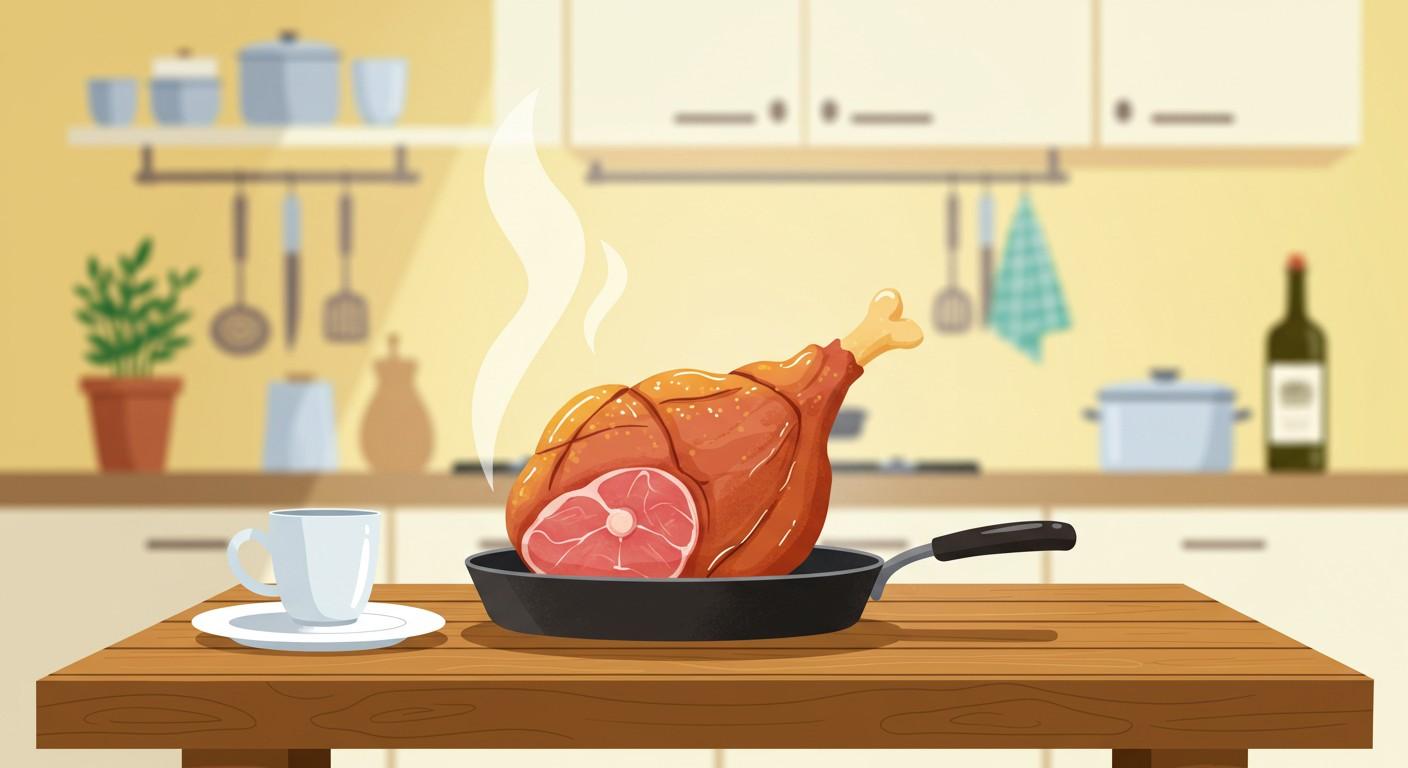
Regional variations
Although the basic recipe remains similar, there are some regional differences in the preparation and serving of this dish. These variations are influenced by neighbouring countries, the availability of ingredients, and local traditions. Here are the key regional features:
Primorska region (Adriatic coast) – The dish takes on Mediterranean flavours: puff pastry similar to Italian sfoglia is combined with olives and cheese, such as Parmesan or the local Naturi, and ham marinated with rosemary and thyme. It is served with light sauces based on olive oil and lemon juice, reflecting Italian influences.
Alpine regions (Kras, Gorenjska) – The focus is on heartiness: dense yeast or potato dough, which retains heat well, is paired with smoked or cured ham. Mushrooms, buckwheat, or pork cracklings are added, and in some villages, the dough is infused with pork fat. For Easter, the ham is stuffed with prunes and dried apricots and baked in dough with a honey glaze.
Eastern Slovenia (Prekmurje) – Displays Hungarian influence: layered dough similar to strudel is paired with ham, paprika, onion, and sour cream. Sometimes, cottage cheese or a layer of Prekmurska gibanica is added. The dish is seasoned with caraway and sweet paprika and served with potato salad or stewed cabbage.
Modern interpretations of the dish surprise gourmets. In Ljubljana, šunka v testu is made into mini – pies or rolls with ham, mozzarella or Gorgonzola, and mushrooms, using ready – made puff pastry. In coastal restaurants, truffles or artichokes are added, while at gastronomic festivals, chefs experiment with buckwheat dough, pumpkin, or berry fillings. A special version includes Pleterska hruška, a pear liqueur added to the sauce for a unique piquancy.
Thus, while maintaining its traditional foundation, the dish adapts to local tastes and modern trends.
Other traditional Easter ham dishes
If šunka v testu has already become a symbol of the holiday, then dishes such as Dimljena šunka, Pečena šunka, or Kuhana šunka reveal the full diversity of traditions and become part of Easter ham dinner.
Smoked ham or Dimljena šunka
This is the basis of many Easter dishes. It is prepared in advance using traditional salting and smoking methods. First, the pork leg is salted in brine with bay leaves, garlic, and spices for 5–7 days. Then it is smoked over beech or fruitwood chips at a low temperature for a long time. When served as a standalone dish, it is thinly sliced and accompanied by horseradish, mustard, or eggs.
Baked easter ham or Pečena šunka
A regular or picnic ham is baked with a glaze for added juiciness and aroma. There are many glazing options. For example, a honey – apple glaze is made from apple juice, honey, mustard seeds, and nutmeg; a raspberry glaze is prepared by mixing raspberry jam, white vinegar, and spices; and an orange – cognac glaze includes orange zest, cognac, and garlic. The ham is scored, coated with the mixture, and baked for about an hour, occasionally basting with the juices collected in the tray.
Stuffed ham
Sometimes ham hocks are also baked with fillings, such as dried fruits and spices. Dried apricots, prunes, and cloves are placed into cuts in the ham before coating it with a honey glaze. Alternatively, the ham is injected with a mixture of garlic, rosemary, and olive oil before baking.
Kuhana šunka or cooked ham recipe
The ham is simmered in water over low heat, with onions, bay leaves, and black peppercorns added for aroma. The cooking time is approximately 60 minutes per kilogram of meat. After cooking, the ham is left to cool in the broth to retain its juiciness.
Fuji
A dish from the Goriška Brda region, consisting of rolls made from Easter bread, cooked in the broth left after boiling prosciutto. It is served on slices of boiled prosciutto with a horseradish sauce made from grated horseradish, breadcrumbs toasted in butter, vinegar, and broth.
Soup Aleluja
A traditional soup from the Dolenjska region, made from the water left after boiling Easter ham. The soup includes dried turnip peel, seasonal vegetables, and homemade noodles, giving it a rich flavour.
Gorenjska prata
In the Gorenjska region, a dish called "prata" or "budl" is prepared – made by mixing chopped bread, leftover smoked meat, eggs, and spices. This mixture is baked in a mould to create a dense meat loaf, which is served warm or cold with salad, sauerkraut, or horseradish.
Kraški pršut
This is a dry – cured pork leg, aged for 12–16 months. It is made using sea salt and dried under the influence of the wind, giving the meat a ruby – red colour and intense flavour.
If you haven’t planned your Easter menu yet, you have plenty to choose from. These various methods of preparing and serving ham will help bring a unique charm to your Easter table.
Where to buy ingredients?
Preparing for Easter in Slovenia is not only about traditions but also about finding the freshest ingredients and delicacies. If you are planning a festive meal, here are some places to shop for everything you need without hassle.
Supermarket chains: a wide selection and discounts
If you need to buy ham, eggs, horseradish, spices, bread, and other ingredients for your Easter feast, visit Spar, Mercator, Hofer, Lidl, Eurospin catalog. These stores offer both budget and premium product lines.
Mercator often has great deals on meat delicacies and baked goods before the holiday. Interspar stocks Kraški pršut, while E. Leclerc offers pre – sliced meat and cheese assortments, saving you time in the kitchen.
If you're looking for the best prices, check out the promotions at Spar, Lidl, and Hofer catalog – some meat products and baked goods can be up to 50% off before Easter. And if you're looking for drinks, Ahac has a wide selection of alcoholic and non – alcoholic beverages, plus special holiday discounts.
How much does it cost to make ham in dough?
The price of ham varies significantly between stores, from €4 – 5 per kilogram for lesser – known brands to €17 – 25 per kilogram for well – known brands. Of course, different prices mean different quality, and in this case, it’s worth paying extra for a high – quality and tasty product while saving on something else. Here’s an approximate price range in different retailers:
- Tuš – €6.8 – 15/kg
- Mercator – €8 – 22.90/kg
- Spar/Interspar – €7.8 – 27/kg
- Hofer – €5/kg
- Lidl – €4.7 – 18/kg
- Eurospin – €4 – 10/kg
- E. Leclerc – €7 – 32/kg
Besides the ham itself, you’ll also need other ingredients:
- Flour – €0.8 – 2/kg
- Eggs – €1.9 – 5.7/10 pcs
- Yeast – €0.45 – 2.5/pack
- Milk – €0.83 – 2.3/litre
- Butter – €2.2 – 4.3/250 g
- Ready – made yeast dough – €3 – 5.5/kg
- Spices – €0.6 – 3.5/pack
Farmers' markets: authenticity and local charm
If you value natural products and atmosphere, head to the Ljubljana Market. Here, farmers sell homemade ham, cheeses, handmade horseradish, as well as Easter wreaths "butar" and decorated eggs "pirhi".
Before Easter, thematic fairs open in various regions. For example, in Goriška or Bela Krajina, you can taste and buy traditional Easter meal, such as sweet bread and rolls "potiča"—a perfect addition to a festive tea party.
Don’t forget about local bakeries: many of them make not only traditional types of bread but also Easter pastries based on original recipes, adding nuts, dried fruits, or spices to the dough. This is a great chance to surprise your guests with an unusual taste.
In Slovenia, you can easily find everything you need for Easter—whether in supermarkets, markets, or local bakeries. The key is to plan your shopping in advance to take advantage of special offers and delight your loved ones with traditional treats.
How to save money on grocery shopping: budget – friendly Easter tips
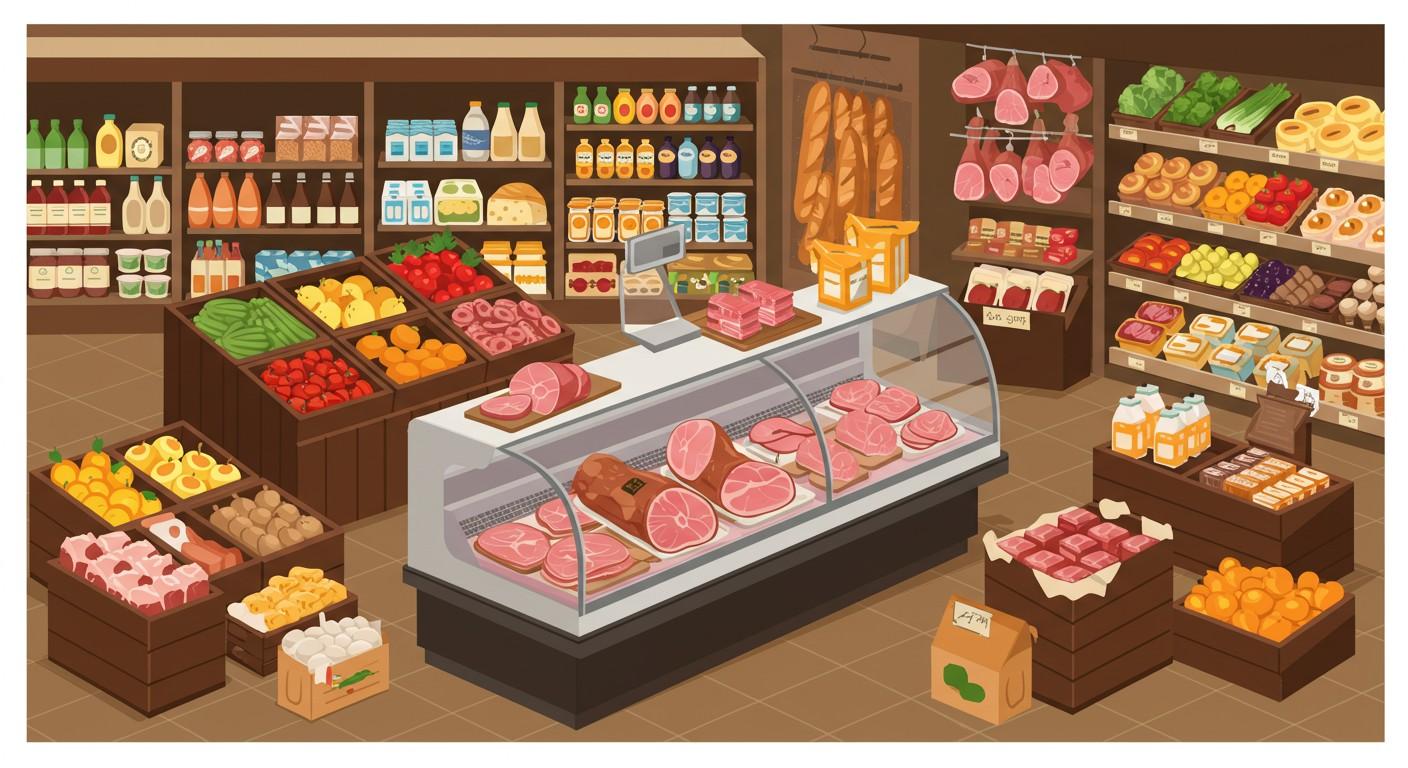
Easter 2025 is just around the corner, and there’s still so much to do. As practical as it may sound, preparing for Easter is not just an enjoyable tradition but also an additional expense. After all, Easter recipes require a lot of ingredients. However, there are several ways to save money on Easter groceries without sacrificing quality.
Shop during promotions
Before Easter, shopping centres and major supermarkets such as Spar, Lidl, Hofer, Mercator, and Eurospin offer discounts of up to 50% on meat products, baked goods, and other items. This is the best time to buy ham, dairy products, and baking ingredients at lower prices.
Choose discounters
At Lidl, Hofer, and Eurospin, prices are initially lower. For example, ham here may cost only €4 – 5/kg, while in Mercator or Spar, it can go up to €30/kg. Basic ingredients—flour, eggs, milk—are also more affordable in discount stores.
Plan your shopping in advance
If you shop at the last minute, you may face a limited selection and inflated prices. The best strategy is to make a shopping list in advance and track discounts 2 – 3 weeks before the holiday. Flour, spices, yeast, and even smoked meats have a long shelf life.
Don’t ignore seasonal products
Spring vegetables are now cheaper. Include them in your menu instead of expensive imported ingredients. For example, a salad with local greens will cost €2 – 3, while one with avocado or tropical fruits will be €5 – 7.
Visit farmers' markets
At regional fairs, you can find fresh products directly from producers without supermarket markups. For example, it’s often cheaper to buy homemade horseradish, eggs, and cheeses there. Sometimes, you can even negotiate a discount for bulk purchases. Additionally, you might not always find the cheapest options, but you will discover unique products and delicious homemade smoked meats unavailable in regular stores.
Cook at home instead of buying ready – made products
Pre – packaged Easter sets and meat platters from E. Leclerc catalog and Interspar catalog cost more than individual ingredients. For example, buying flour, eggs, and butter will cost you €5 – 7, while a kilogram of ready – made dough will be €3 – 5.5.
Use loyalty programs
Some supermarkets offer loyalty cards that provide additional discounts or allow you to collect points. Mercator catalog, Spar catalog, and Lidl catalog frequently announce special deals for cardholders, while Tuš catalog sometimes features "2 – for – 1" promotions for members of their program.
Don’t overpay for brands
The same product may cost more just because of its packaging or brand name. For example, butter in regular packaging at Hofer or Lidl costs €2.2/250 g, while a similar branded product at Mercator can cost up to €4.3. Carefully compare prices and consider store – brand products.
Buy in bulk
Stock up for yourself or team up with friends or neighbours for wholesale purchases. This way, you save money and avoid unnecessary expenses. This option is best for long – lasting products, but if you have a large family or really enjoy a product, why not take advantage of bulk offers?
Check customer reviews
Want to find the best Easter meals or the highest quality and most affordable vegetables? Customer reviews can help. Sometimes, price and a well – known store brand are not the best guarantees of a good purchase, while a small bakery around the corner might sell the most delicious potiča in town.
Stay updated
Supermarket and shopping centre advertising newspapers are an excellent tool for those looking to save money. They provide information on discounts, promotions, and special offers, along with detailed terms and conditions. Additionally, these publications often include coupons and promo codes that offer extra savings.
If you value your time and don’t want to miss out on any updates, visit the Geobuyer platform. It brings together the latest offers, current flyers, and promotional materials from brands and stores, allowing you to quickly compare prices, plan your shopping, and avoid impulse spending. The platform also makes it easy to save coupons, important deals, and shopping lists – all in one place. This not only saves money but also turns shopping into a well – organised and enjoyable experience.
There’s also a blog on the platform, where you can dive deeper into the world of commerce: explore trends, tips for finding the best deals, and learn how to apply them in practice. The articles help you stay informed about the latest shopping strategies and smart – buying trends.
P.S.
Easter in Slovenia is a harmonious blend of centuries – old traditions, spiritual heritage, and culinary craftsmanship, where every dish tells a living story.
Šunka v testu, with its symbolism of sacrifice and protection, not only brings families together at the festive table but also serves as a bridge between the past and the present. Regional variations of this dish—ranging from hearty Alpine flavours to Mediterranean sophistication—highlight the country’s cultural diversity, while modern interpretations prove that traditions can be both relevant and creative.
When planning your menu, follow money – saving tips—supermarket promotions, farmers' markets, and home cooking will help you create a festive meal without unnecessary expenses. And remember, Easter is about warmth and time with loved ones, not just a lavish table.





